°Arcus°
Home » Creation stories » East and Southeast Asia
CREATION STORIES FROM EAST AND SOUTHEAST ASIA
AINU
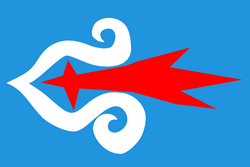
In the beginning, the cosmos took the form of a huge quagmire created by God. Within this morass, there lived a trout of gigantic proportions. God decided that the back of this fish would be the ideal spot for the formation of land, and the inhabitable world was duly placed thereon. This legend explains the tides of the sea as a result of the trout's sucking in and spitting out the water.
Another legend explains that the creator dispatched a wagtail with the objective of fashioning inhabitable land from the waters of creation. The bird did this by fluttering over the surface of the waters, thus causing a disturbance which enabled it to gather together areas of mud, which the wagtail then beat with its tail in order to solidify them. In this manner, the islands later inhabited by the Ainu were brought into being.
The Ainu themselves, due to their comparatively hirsute nature, in contrast to their more glabrous neighbours, believe themselves to be descended from a bear. This animal was of paramount importance within Ainu religious traditions, and its sacrifice was considered a necessary evil. Other stories, which seem to bear some hallmarks of influence from the Yamato people who dominate the Japanese islands to the south suggest that the deity Kanto-Kor-Kamuy sent the couple Okikurumi and Turesh from heaven to earth. This pair had a son, who was the first of the Ainu, and it was by means of this culture hero's teaching that the Ainu came to possess the skills needed to survive in their harsh homeland.
BÖN
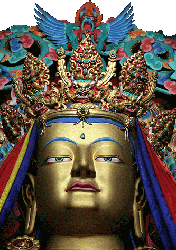
In the beginning, the only being was an "uncreated blue toad of turqouise," or else a female tiger, or, in some stories, Yang dak dyal po. Yang dak dyal po breathed forth the syllables which gave the cosmos its existence.
Some accounts also detail the killing of a primeval being by a hero by the name of Gesar (identified by Buddhists with an avatar of Avalokitesvara).
Creation itself was accomplished by the combat between Radiance and Black Misery, two powers who emerged from a black and white cosmic egg. The white lord, associated with the former, creates all that is good from a cosmic egg, while his black counterpart is responsible for anti-existence. The land of Tibet, which was under water in the beginning, emerged with such force that it became the most elevated of all lands above sea level.
Early in the history of the present phase of the cosmos, Ling-dkar approached a god for the hand of his daughter. The god was reluctant to grant this. Ling-dkar, however, argued that a union between him and the daughter of the god would ensure that the gods would be worshipped and would in turn proffer protection to the humans.
After her father assents, the goddess leaves heaven with a third of her parents' inheritance, the remainder going to her brother.
CHINESE
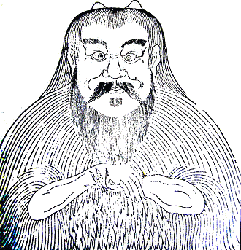
PANGU
One specific group of Chinese cosmogonic myths focus on the person of Pangu or P'an-ku, a primordial giant. At the beginning of his act of creation, Pangu separated yin from yang, creating earth and sky from these two. He then assumed the role of axis mundi, separating the pair, by pushing up the sky. Day by day, all three grew, with this process only completed after some 18,000 years.
At that point, Pangu realised he was dying, and enabled the remainder of the universe to come into being from his remains: -
- from his breath came clouds and wind;
- thunder arose from his voice;
- the sun and moon were formed from his eyes;
- his blood formed the rivers;
- his head created the mountains and eschata;
- fertile lands were formed from Pangu's muscles;
- his fur became the forests and scrublands;
- from his bones arose mineral weath, whilst the marrow became diamonds;
- Pangu's sweat became the rains;
- Pangu's facial hair gave rise to the stars and the Milky Way;
- all animal life arose from the fleas which had adhered to his fur.
OTHER ACCOUNTS OF THE CREATION OF THE UNIVERSE
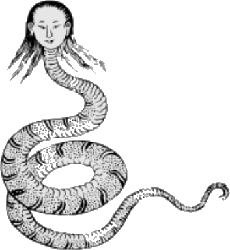
The oldest strands of Chinese mythology, as reconstructed by Sinologist Anne Birrell, posit creation from a pre-existing landscape of mist - imbued with the life force of qi, the embodiment of cosmic energy - from which the heavier element of yin and the lighter element of yang precipitated, and from which other paired groups of elements also arose.
The Tao Te Ching refers to this primordial element as Tao ("Way"), which gave birth to unity, from which arose duality, then trinity therefrom.
From the cold qi of yin came water, whilst the hot qi of yang formed fire, with the essence of these two primordial dual elements becoming the moon and the sun respectively. This essence overflowed to become the stars. In this scheme, yin and yang came from the primordial mixing of heaven and earth.
JAPANESE
In common with other East Asian and world mythologies, the Japanese creation story, as outlined in the Kojiki and Nihongi (also termed the Nihon Shoki), proceeds from an undifferentiated, chaotic, egg-like state, with heaven and; earth unparted. The primary element was a watery mass.
Eventually, the lighter element rose up to form heaven, which was accomplished with ease, whilst the heavier, darker element gathered together, though with difficulty, to form the earth, some time later, floating about upon the surface of the waters.
Within the Takama-no-hara ("Plain of High Heaven"), a group of deities took shape and came to life: -
| Kojiki | Nihongi |
|---|---|
| Amenominakanushi-no-kami | Kunikotachi-no-mikoto* |
| Takamimusubi-no-kami | Kuninosatuchi-no-mikoto |
| Kamimusubi-no-kami | Toyokumunu-no-mikoto* |
The Kojiki has the two gods Kuninotokotachi-no-kami (*) and Toyokumonu-no-kami (*) appear after the first triad.
Thereafter, several pairs of gods arose: -
| Kojiki | Nihongi | ||
|---|---|---|---|
| Uhiji-no-kami | Suhijini-no-kami | Uhijini-no-mikoto | Suhijini-no-mikoto |
| Tsunuguhi-no-kami | Ikuguhi-no-kami | ||
| Ohotonoji-no-kami | Ohotonobe-no-kami | Otonoji-no-mikoto | Otomabe-no-mikoto |
| Omodaru-no-kami | Ayakashikone-no-kami | Omodaru-no-mikoto | Kashikone-no-mikoto |
| Izanagi-no-mikoto | Izanami-no-mikoto | Izanagi-no-kami | Izanami-no-kami |
THE CREATION OF LIFE ON EARTH
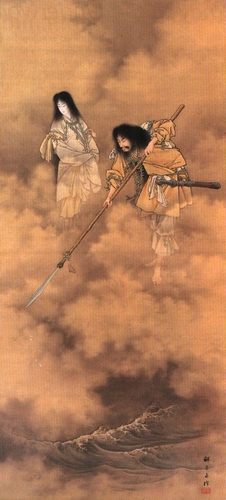
Izanagi-no-mikoto and Izanami-no-mikoto are ordered to descend to the earth in order to furnish the formless mass with order. They are given a "heavenly jewelled spear," with which they stirred the matter of the earth from their station upon Amenoukihashi (the "Floating Bridge of Heaven"), resulting in the creation of the island of Onogoro.
Descending to Onogoroshima, the pair raised a "heavenly august pillar" of the island, and erected a hall of eight fathoms, before encircling the pillar. Izanami-no-mikoto speaks first, which causes Izanagi-no-mikoto to protest that, as a male, it should be he who initiates conversation. They try again, this time successfully, and unite sexually, giving rise to the unsatisfactory children Hiru-go and Akaji [Kojiki], or Awaji [Nihongi]. They try again, this time successfully, giving rise to the various islands of Japan. They then produce the various rivers, mountains and plant ancestors, before giving birth to the sun goddess Amaterasu-omikami, the moon god Tsukiyomi-no-mikoto and the overbearing Susanoo-no-mikoto (according to the Nihongi).
Finally, the god of fire - variously known as Hinohayayagiwo-no-kami, Hinokagabiko-no-kami, Hinokagutsuchi-no-kami, Ho-musubi or Kagutsuchi - is born. Giving birth to this flaming deity leaves Izanami-no-mikoto mortally wounded (though, burned as she was, she managed to produce the earth goddess Haniyamabime and the water goddess Mitsuhanome, or else a plethora of deities from her vomitus and other excretions). She succumbs to her burns & becomes the first deity to descend to the fearsome Yomi, realm of the dead.
Overcome with grief, her husband resolves to recover her from Yomi, but first avenges her by slaying the fire god with his "ten-grasp sabre." Upon entering Yomi, he calls out. Izanami-no-mikoto responds, saying that he must not see her, warning him that he would be horrified. He is eventually pursued out of Yomi by a host of demonic entities. Upon managing with some difficulty to reach the safety of the earth once again, he purifies himself, birthing a host of other deities in the process.
KOREAN
CHEONJIWANG BONPURI
Cheonjiwang Bonpuri is one of several Korean creation myths, gathered from shamanic sources. Cheonjiwang Bonpuri was related by a shaman on the island of Jeju.
In the beginning, there was only an empty void. Eventually, a gap formed within the void. The sky and earth were formed from the lighter and heavier matter in the gap precipitating upwards and downwards respectively. A drop of blue dew falling from the heavens and a drop of black dew rising from the earth met in the middle and, from their admixture, arose all of existence barring the sun, moon and stars.
Within this congealed creation, three roosters cried forth: -
- the Rooster Emperor of the Sky;
- the Rooster Emperor of the Earth; and
- the Rooster Emperor of Humans.
Their dawn chorus caused the greatest of the gods, Cheonjiwang ("King of the Heavens and the Earth") to awaken, whereupon he forged two suns and two moons, which rise and fall every day and night.
Meanwhile, on lseung ("this world"), the domain of mortals, Sumyeong Jangja became the first human to tame animals, enabling him to reach supremacy, accompanied by nine horses, nine bulls and nine hounds. This tyrant soon uttered a hybristic cry, which infuriated Cheonjiwang, who invaded Sumyeong Jangja's realm, riding in his golden chariot pulled by five dragons. He was accompanied by his four generals and 10,000 soldiers from the realm of the gods. The generals were: -
- General Lightning;
- General Thunder;
- General Fire; and
- the Master of the Winds and the Rains.
Reaching Sumyeong Jangja's palace, Cheonjiwang climbed a willow tree and demanded the human despot to kneel before him. Sumyeong Jangja dispatched his 27 animal amenuenses against the gods, but Cheonjiwang transposed them to perches atop the palace. A fierce struggle ensued which resulted in Sumyeong Jangja's surrender, though he was punished by having to wear an iron band on his head which caused excrutiating pain, leading to his ordering a slave to behead him.
Thereafter, Cheonjiwang spent the night at the cottage of Grandma Baekju, and became captivated by the sound of her daughter, Wise Girl, brushing her hair. He enquires as to whether or not it would be possible to engage in a liaison with her. Both Grandma Baekju and Wise Girl - thereafter Wise Wife - assent to this. The product of this union comes in the form of two sons: Great Star and Little Star. Their mother had been granted a boon in the form of two gourd seeds given by the god, which the two boys subsequently plant. Immediately, gourd vines appear and rise to grasp the arms of Cheonjiwang's throne in heaven. The boys climb them to reach their father's domain, but the weight of them causes the arm of the throne to break.
Once the three meet, Cheonjiwang admits that it is a difficult task to rule the four worlds (heaven, earth, lseung and the world of the dead) simultaneously. The twins then engage in a series of contests, with the result that Great Star defeated his brother. However, the cunning Little Star swapped his small flower for his brother's larger bloom and proclaims himself the victor, with the result that Great Star was forced to rule in the netherworld. Small Star, meanwhile, is granted lseung as his own. He immediately sets out and puts an end to Sumyeong Jangja and his beasts. Sumyeong Jangja is torn into four and his flesh and bones are thrown into the air. His corpse gave rise to all manner of insect pests which were to plague humanity henceforth.
Small Star, however, found the tumult of lseung disorientating, what with every living creature having the power of speech, whilst humans were unable to communicate due to their entreaties being answered by a gwisin ("ghost"). In order to rectify this situation, Small Star begged Great Star to rid the world of chaos. Great Star readied his Cheongeunsal, arrows twain and five sacks of pine dust. Deploying the Cheongeunsal, Great Star shot down one of the suns, which became the stars of the eastern sky, before repeating the feat with one of the moons, which filled the western sky with stars. He then opened the sacks of dust, which rendered all plants and animals speechless, before sorting out the humans from the gwisin, with the heavier beings becoming humans. He then retired back to the underworld.
However, Small Star neglected to inform his brother of humanity's bad habits, resulting in their remaining capable of great evil. Small Star could do nothing about this, as his brother was the more powerful of the two.
Finally, Wise Wife was granted the title Bajiwang ("earth goddess"), thus completing the compliment of four tutelary deities over the four realms.
CHANGSEGA
This myth, collected at Hamhung in north eastern Korea, credits the gigantic Mireuk with the separation of heaven and earth, after which he placed columns of copper at each corner. Mireuk proceeded to created men and women from five golden and five silver insects respectively. Things proceeded peacefully until another giant, Seokga, came along and fought against Mireuk for dominance of humankind. Unfortunately, Mireuk was defeated, and Seokga proceeded to reign. The nature of his victory was, however, unjust, and resulted in the origin of evil.
Interestingly, this shamanic tale contains considerable influence from Buddhist thought: the two giants are apparently based on the figures of the future buddha Maitreya and the originator of that faith, Siddhārtha Gautama, respectively. The characterisation of the latter in particular as a rather negative figure and the font of sin is certainly controversial, and might reflect resistance against the "buddhistification" of Korean religion.
THE FOUNDING OF GOJOSEON FROM SAMGUK YUSA
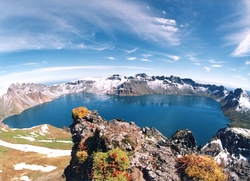
The charter myth of the ancient Korean state of Gojoseon, which was destroyed in 108 BC by the Chinese, contains elements suggestive of cosmogony. The earliest of three dynasties said to have ruled this kingdom were descendants of Dangun Wanggeom, who was the grandson of Haneullim or Hwan-in ("Heavenly King").
Haneullim - who appears to have been a sky god similar to the Chinese Tiān (worship of which emerged during the Zhōu dynasty) and the Turko-Mongolic Teŋri - had a son, Hwanung ("Supreme Divine Regent"), who came to earth with 3,000 followers, descending from heaven by a sandalwood tree on Baekdu Mountain, where he founded the city of Sinsi. He was worshipped by a bear and a tiger who lived nearby, who he asked to remain within their cave for 100 years. The tiger left, whereupon the bear was transformed into a beautiful maiden, who took the name Ungnyeo. Becoming lonely, she prayed to Hwanung for a child, whereupon he married her. Together, they became parents to Dangun.
The creation of Gojoseon was placed in 2333 BC and persisted until about 1122 BC, when the throne fell to Gija (Chi-tzu), a Chinese sage who fled to Korea after the fall of the Shāng and seizure of power by the Zhōu, who granted him rule in the area. A third dynasty was founded by another Chinese exile, Wei Man or Wi Man, who fled to Gojoseon in 195 BC after his lord Lu Wan of Yān was defeated by the Hàn.
THE SANSEONGHYEOL AND THE PEOPLE OF JEJU
Another Korean myth describing the first ancestors of the people of Jeju is that which centres upon the Sanseonghyeol on that island, and is associated with the state of Tamna which ruled the island until AD 1404. The Sanseonghyeol are three chasms in the earth from which, according to legend, the semi-divine ancestors of three clans emerged: -
- Ryang Eulna;
- Go Eulna; and
- Bu Eulna.
Once they emerged, these three discovered a box which had come from the sea to the north, having been brought by a mysterious traveller from the land of Byeoknangguk. Upon opening the box, three beautiful princesses emerged, along with livestock and the seeds of five types of grain. These laid the foundations for village life. Eventually, in order to determine the allotments of the land, the three brothers fired arrows from Tamna mountain which landed in the places from which they would rule.
MAGOHALMI
This myth from Kwanbuk in the far east of North Korea concerns a giantess named Grandmother Mago, who forms the geology of the earth using her own excreta mixed with mud and stone.
SIRUMAL
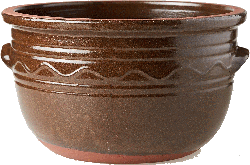
This story comes from Osan in the north west of South Korea, and tells of Dangchilseong, who spends a night with Lady Maehwa, resulting in the birth of two sons, Seonmum and Humun. The boys are mocked by their contemporaries for their lack of a father, but are eventually allowed to access the sky realm to meet Dangchilseong, who grants them kingdoms. Seomun becomes the king of Daehanguk, while Humun is given Sohanguk. Sohan and Daehan are Korean seasonal terms, denoting the "Minor Cold" and "Great Cold" respectively. The cold of winter is at its most oppressive during Sohan, but begins to warm during Daehan, hence the sayings "if it is not cold, it’s not Sohan; if it is not mild, it’s not Daehan" and "the ice of Sohan melts on Daehan." Additionally, the modern self-denomination of South Korea is 대한민국 (Daehan Minguk), in reference to the states of Byeonhan, Jinhan and Mahan which emerged in the period at around the turn of the era (these were collectively known as the Samhan).
This story is performed in ritual, before a pot known as a siru.
LAOTIAN
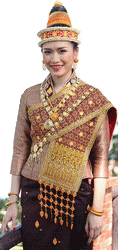
The Laotian people possess a cosmogony in their Nithan Khun Borom narrative, which presents the founding of the kingdom of Lan Xang.
There was dissention among the gods. This led to a deluge, after which the only things remaining on the earth were three huge gourds.
Noises being heard within the gourds, the gods broke them open, and all living things emerged.
These included two groups of people: the dark-skinned Kha and the lighter Tai Lao people.
These, the gods attempted to instruct in the ways of righteous living, but the people proved to be of an arrogant bent.
This led Indra, the ruler of the gods, to send his son Khun Borom - also known by his title Parama, meaning "lord" - to earth to bring about a resolution.
Khun Borom landed on earth in the midst of a paddy field, along with Pu Ngoe Nga Ngoe, Pu Yoe Ya Yoe or Pu Thao Yoe and Me Ya Ngam, who would become ancestors of the Lao people.
Eventually, Khun Borom produced seven sons, who divided the land into seven regions, which included China and south-eastern Asia.
VIETNAMESE
KHÔNGOS
In former days, sky and earth were mixed together in a chaotic matter. Within this, Khôngos appeared. Initially, all of what was to come was manifest within the primal giant Khôngos.
He then separated earth and sky, before placing a great pillar to maintain this. The earthworks remaining from his excavation of material to create this formed the waterways.
However, he eventually broke up the pillar and cast the parts around, thus forming features of the landscape.
At some point, another giant, this time female, came into being. Khôngos was immediately infatuated, but the female spurned his advances. Sadly for Khôngos, she was more than a match for him, being larger and stronger. She eventually laid a number of challenges before him, which she always won. However, the process of these events made the rest of the world we know.
The couple eventually married. Khôngos was so excited by the prospect that his penis was capable of being used by his guests as a bridge. Sadly, one of the guests managed to drop hot ash onto Khôngos' privy member, which caused him to leap in pain, depositing half of them into the river below. Fortunately, his bride-to-be saved them.
LẠC LONG QUÂN AND ÂU CƠ
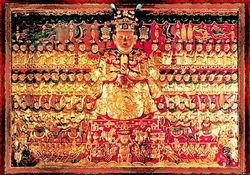
Lạc Long Quân, the "Dragon Lord of Lạc," is presented in Vietnamese sources as a revered ancestor figure. He was the second ruler - Hùng Vương - of the early Vietnamese state of Văn Lang, with the throne name Hùng Hiền Vương, and traditionally ruled during the mid-3rd millennium BC. While his ancestry appears to derive to some extent from Chinese sources (his father, Kinh Dương Vương, was the son of one Đế Minh and a descendant of Viêm Đế, identified with the Chinese "Red Emperor" Yán Dì. The correspondences between the Vietnamese ancestors and their Chinese counterparts from the Dìwáng shìjì follow: -
| Vietnamese | Chinese |
|---|---|
| Viêm Đế (Đế Thần Nông) | Yán Dì (Shénnóng) |
| Đế Lâm Khôi | Dì Lín Kuí |
| Đế Thừa | Dì Chéng |
| Đế Minh | Dì Míng |
One day, Lạc Long Quân saw a crane flying with a monster in pursuit. He took up a great rock and threw it at the monster, which found its mark, resulting in the creature's demise. Thereafter, the crane transformed into the shape of a beautiful fairy woman, Âu Cơ, who immediately fell in love with Lạc Long Quân. The pair married and, eventually, Âu Cơ bore a hundred egg sacs, from which hatched a hundred children, who would become the ancestors of a hundred Vietnamese lineages marked by their family names.
However, while Lạc Long Quân's domain was the sea, Âu Cơ longed for her native mountains. After some time, the couple reluctantly agreed to separate, with Âu Cơ taking fifty of their children to her native mountains in what is today northern Vietnam. These would, in time, be nurtured and found the Vietnamese nation, continuing the line of Hùng Vương.
Further parallels with China can be seen from the notion of a hundred ancestors: Chinese sources know of a group known as Bǎi Yuè (Bách Việt in Vietnamese), which signifies the "hundred Yuè." Nonetheless, parallels are also evident from other cosmogonies, particularly in terms of the eggs from which the hundred children hatched.
